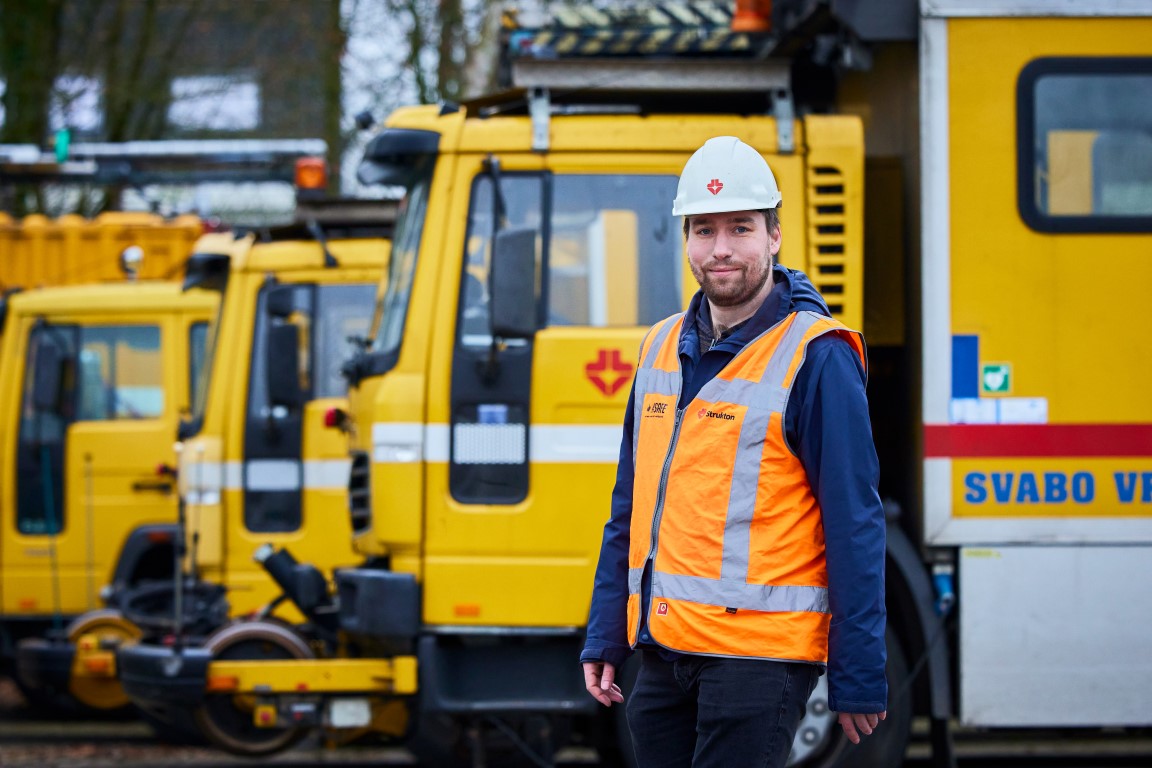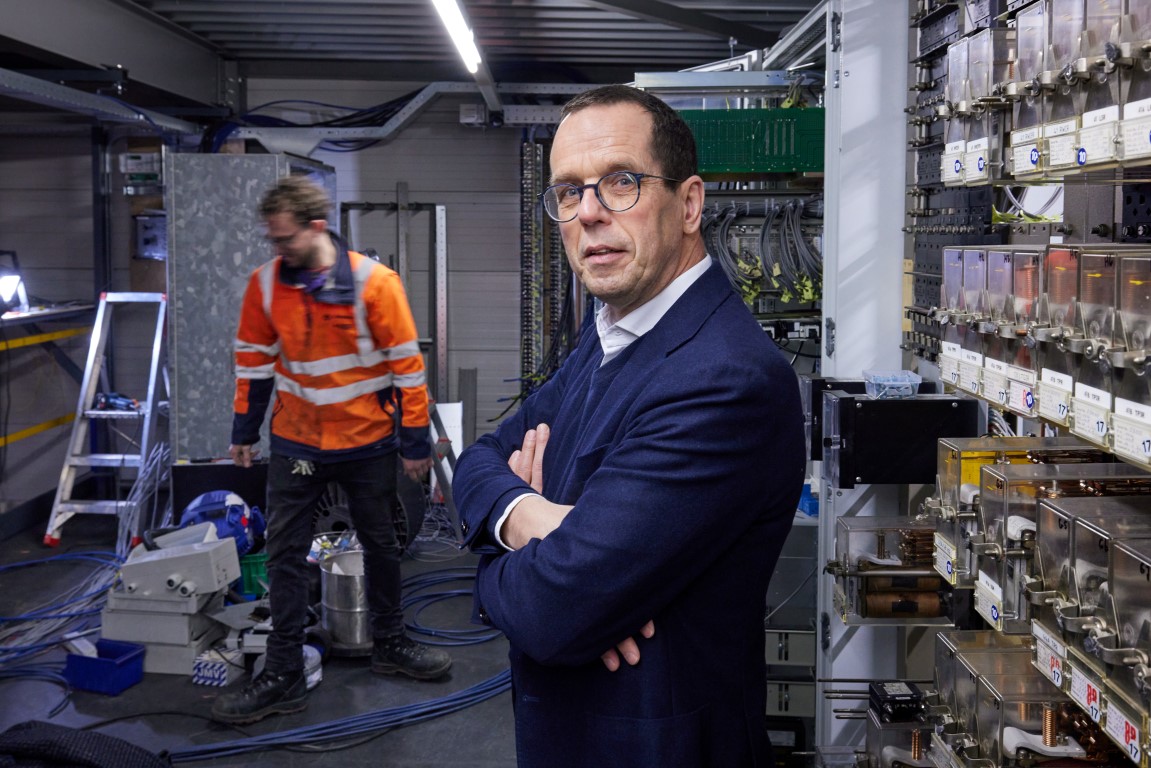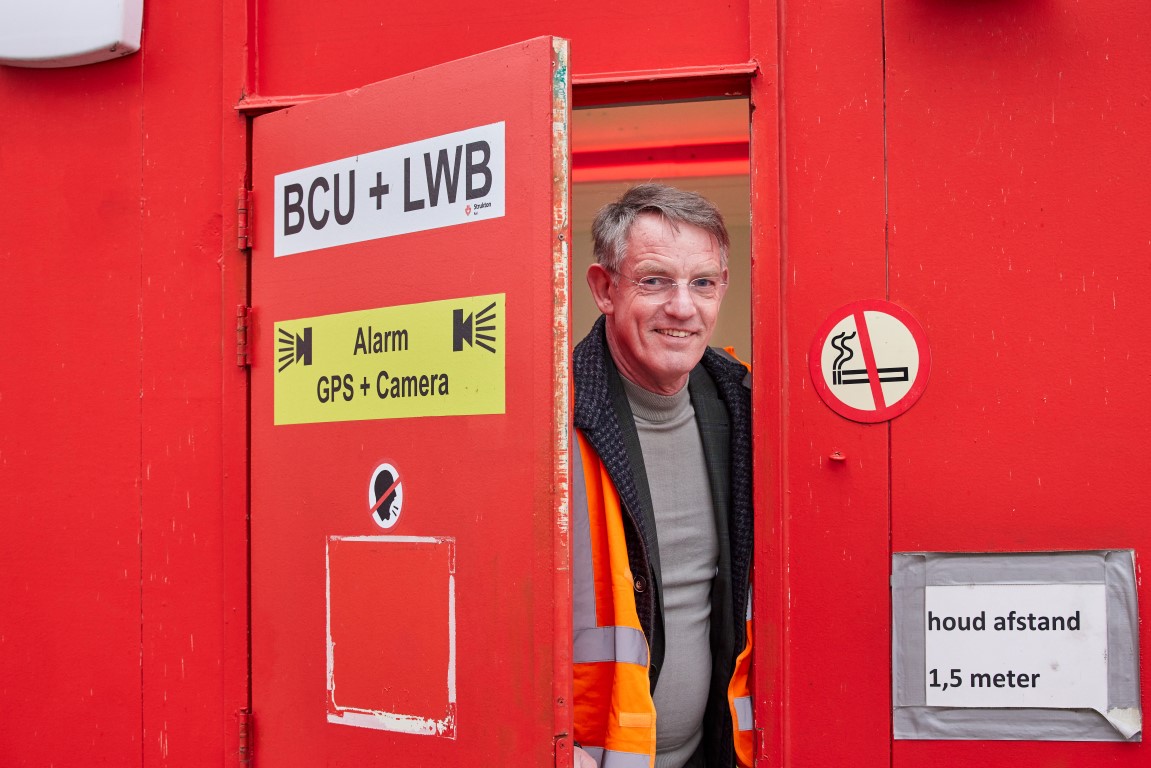Article
Unique ERTMS innovations
Strukton is working on an innovation that enables it to digitally add ERTMS installations to a track section and to subsequently have them installed by robots. “These innovations enable us to speed up our design and construction processes, which saves time and money,” says Ab Drijver of Strukton.

Corné van de Kraats: The robot saves a lot of time and has less chance of errors. Certainly in collaboration with the ERTMS Configurator
Enthusiastic about ERTMS
ProRail’s announcement stating that it intended to change its tender approach was enthusiastically received by Strukton. One idea after another was tabled and ultimately it was decided to start working on an ERTMS Assembly Robot and the ERTMS Configurator. Two different innovations that in future will supplement each other.
Robot
Railway work often is very complex and time consuming. The ERTMS Robot makes life considerably easier. “To begin with, let’s compare it to the existing situation. Today, many objects are manually installed along the tracks. This is a rather complex process,” Corné van de Kraats of Strukton explains.
“First, someone goes into the field with GPS to determine the approximate location where the object is to be installed. Next, a team starts working on installing the object. After that, a surveyor measures exactly where the object was installed and fills out the forms needed to enter this information into the system.”
Strukton believed that all of these activities could be carried out much faster. This is why it conceived of the ERTMS Assembly Robot. “It would be great if a robot could take on all of these activities. The robot would take on all of the physically demanding work, thus relieving our employees. This saves a great deal of time and is also less error prone. All the more so in collaboration with the ERTMS Configurator.”
“The Configurator is used to determine in advance exactly where the object is to be located. Next, we send the robot to this location to install the object and when the robot is done, we immediately have all of the required information digitally available. A process that normally takes two or three nights is now ready in one go and the process also eliminates all manual administrative tasks.”
The next step is to demonstrate that this actually works.
Corné van de Kraats Strukton Development Engineer

Ben van Schijndel: Safety is of course number one priority, but there is no harm in trying something new.
Subsystems
While a robot that does all of this work may sound simple, it is not possible to produce such a device from one day to the next. “The robot’s design consists of three subsystems. The robot must be able to position itself, it must be able to independently install objects and it requires a vehicle to enable it to move. We are quite far advanced as far as positioning is concerned, but the other subsystems are still fully under development.”
What the robot will ultimately look like remains to be seen, but most probably Strukton will be converting an existing rail vehicle into an independently operating robot. “It is an innovation partnership with ProRail, so we are determining the best option together. Currently we are preparing the requirements to be met.”
“What exactly should the robot be capable of doing and what is the available budget? For example, as the degree to which the robot must be able to operate independently increases, so does its cost. These are considerations that we need to assess together. The next step is to demonstrate that this will actually work; we are quite advanced in this respect. Our aim is to produce something by the end of 2023 that is mature enough for production. We will be able to achieve this.”
Speeding up the process
It should come as no surprise that a robot works faster and is less cumbersome. But exactly how much does it cost and what are the benefits? “Our business case includes a cost/benefit analysis that addresses these questions. Our calculations show that installing an object will go 40 percent faster and that the cost of installation will drop by 38 percent for each installed object. Furthermore, it will mean a significant improvement in working conditions. People will no longer need to do heavy work on their knees in the middle of the night.”

Ab Drijver: With these innovations we can design and build faster and that saves time and money
ERTMS Configurator
Under the leadership of Ab Drijver, Strukton is also hard at work on developing the ERTMS Configurator. But what exactly is this? “I compare it to buying a new car. When you find a car that you like online, you are given the possibility of expanding the basic model online with all kinds of extra options. The colour and the kind of rims you would like, for example. At the push of a button you end up with the car you would ultimately like to have. We are going to develop something similar for the railway,” Ab Drijver explains.
Before implementation actually begins, everything must be fully specified in the Configurator. “We identify everything relating to individual track sections online using a digital twin. This gives us a digital copy of the actual situation. Next, we select a track section from the digital twin and we then add all of the ERTMS installations to be built to the Configurator. This produces a digital version of the track section ready for construction down to the centimetre and the ERTMS Robot can then start doing its work outside. This saves a great deal of time and there are fewer people outside on the tracks. This is safer, more reliable and it is available 24/7. So, a win-win situation.”
We are currently progressing in leaps and bounds
Ben van Schijndel Business Line Manager Signalling & Power at Strukton
Great process
Aside from the fact that the innovations will enormously help ProRail accelerate the ERTMS rollout, Strukton very much likes the new tendering process. “This process is a first step in accelerating ERTMS. In the traditional tendering method you had to go through many steps first before you actually could get down to work,” says Ben van Schijndel, Business Line Manager Signalling & Power at Strukton.
“We are now going to carry out a number of these steps in parallel. ProRail has handed over the problem to all parties and has challenged us to contribute our ideas. This is a key step and it is also better for all parties. In my view describing the problem and asking us to figure out a possible solution is better than providing us with a solution for implementation in advance.”
Van Schijndel finds ProRail’s approach challenging. “Railways are very traditional and we must have the courage to move away from this approach. Naturally, safety is and stays the number one priority, but trying something new can do no harm. We think it’s great and it gives us a great deal of enthusiasm. There is no reason why you can’t do something differently. If it works, you would be making tremendous progress and I believe we are currently doing just that.”
About ERTMS systems
Read about maintenance and implementation of ERTMS
Read more about ERTMS/ETCS